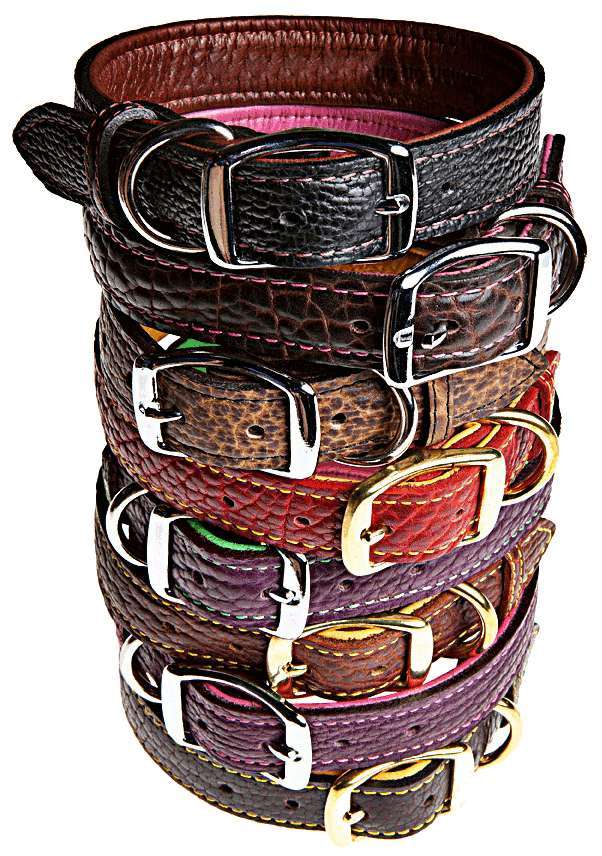Types of Collars and How to Select
Share


Image Courtesy of Tasman Pet
This is a quick look at the different types of dog collars and how each of them function, as well as the purpose they serve. We would love to hear about your favorite types in the comments.

 Martingale
Martingale
These “limited slip” collars are frequently seen on dogs with long, slender necks – such as the greyhound. They are designed to prevent dogs from slipping out of collars while walking as the collar tightens with a tug of the leash. Often, you’ll see a stopping mechanism to prevent a collar from choking a dog.

 Buckle Collars
Buckle Collars
Buckle collars are just that – secured by a metal buckle. They come in many forms, many materials, and are by far the most popular form of collars.
 Quick Release Collars
Quick Release Collars
Generally made of nylon, these collars offer a quick release with a plastic closure that allows you to easily release a dog or cat. They are adjustable and easy to use, which makes them the favorite for every-day use. Be sure your pet has proper identification on at all times.

 Break-away Collars
Break-away Collars
Primarily used for cats, these collars are designed to break with limited pressure. Cats should only ever wear a breakaway collar as they tend to find themselves in the most precarious of positions. These types of collars ensure your pet will not be able to hang themselves should they be climbing and slip, or get hung up and begin to panic.
Slip Collars
Often seen in the form of a chain, these choke collars were initially designed to help your dog learn to heal. Trainers have moved away from the choke chains (thank goodness) and are now exploring more humane alternatives to training. If you are one of the people who still use a choke chain or slip collar, be certain to understand that these collars pose a hazard when left on your dog unattended. Prior to using these chains, you should learn to use it properly from a certified trainer and it should never be left on your pet when you are not with them. They are, unfortunately, known for causing neck and spinal injuries to dogs, so use with extreme caution.
Prong Collars
Please don’t ever use these on your pets. They are harsh and there are far better ways to train a dog. Talk to a dog trainer or explore the far more effective and much safer head collar.

 Head Collars
Head Collars
These types of halters resemble muzzles, but serve a very different purpose. The theory behind them is similar to using a halter on a horse. That is, if you can control the head of the animal, you can control the animal. This is largely true, but be careful not to overcorrect or make sudden jerking movements when using one of these collars. It’s also very important that the collar be properly adjusted or it can ride up on the eyes and cause damage to the head or neck.

 Harness
Harness
Harnesses were first developed for larger pulling dogs, such as the husky or malamute. They slip around the chest and abdomen, crossing over the back, and a leash is then attached to either the top of the harness or the near the chest of the harness.
These are the most common forms of collars and you can find them in all types of designs that range from fashionable and elite, to rough and tumble. No matter which collar you choose, be sure that your pet is always wearing ID and rabies tags. These should be permanently affixed to each of your pets collars.











